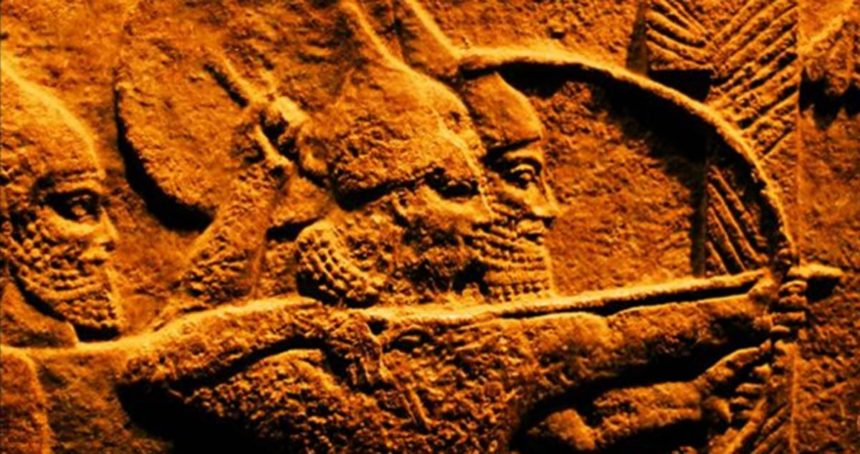Another case made for the Aryan Invasion Theory fails miserably.
Genetic proof for the AIT? Look again.

Authorities on science and the scientific temper very wisely teach students never to use Wikipedia as a source: it is often amateurish and incomplete, and on any controversial subject (not just politics) it is invariably partisan, with one of the contending parties having captured the “encyclopedia” entry and preventing the other parties from entering corrections or their own versions. And yet, it is while browsing through a reference that turned out to lead to a Wikipedia page, that I found the following quotation by Harvard geneticist David Reich that had escaped my notice during the whole hullabaloo triggered by India’s anti-Hindu crowd that finally, “genetics has proven the Aryan Invasion Theory”. Here goes:
“Ancient DNA available from this time in Anatolia shows no evidence of steppe ancestry similar to that in the Yamnaya (although the evidence here is circumstantial as no ancient DNA from the Hittites themselves has yet been published). This suggests to me that the most likely location of the population that first spoke an Indo-European language was south of the Caucasus Mountains, perhaps in present-day Iran or Armenia, because ancient DNA from people who lived there matches what we would expect for a source population both for the Yamnaya and for ancient Anatolians. If this scenario is right, the population sent one branch up into the steppe-mixing with steppe hunter-gatherers in a one-to-one ratio to become the Yamnaya as described earlier- and another to Anatolia to found the ancestors of people there who spoke languages such as Hittite.” (Who We Are and How We Got Here: Ancient DNA and the New Science of the Human Past. By David Reich. New York: Pantheon, 2018)
His putative Proto-Indo-European Homeland lies neither in the Yamna area of the Pontic steppes, the great favourite, nor in Anatolia, the little favourite, but in a third region, tentatively indicated as “Iran or Armenia”, south of the Caspian Sea. That region equally lies outside India and therefore necessitates an immigration or invasion into India in order to explain the presence of a branch of Indo-European there. That is all that interested the anti-Hindu section in India: in order to spite the Hindus, it wants to be able to say to them that they are invaders. The implication would be that they can be divided into “aboriginal” and “invader” communities, and that they have no right to chide the Muslims or the Christian missionaries for having entered India as invaders.
But us scholars, we know that the hypothetical Aryan Invasion was not some generic invasion from just anywhere as long as it wasn’t India. No, it had a specific Homeland, and a lot of effort has already gone into elaborating the archaeology and genetics of the Pontic area in order to correlate these with a linguistic scenario, viz. the disintegration of the ancestral Proto-Indo-European language into its several branches, from Celtic and Germanic to Tocharian and Indo-Aryan.
Now, what Reich says here, is that the Pontic area was not the Homeland. He adds the detail that at least the arrival of the Anatolian branch of Indo-European into Anatolia does not correspond to a gene flow from the Pontic area. So, exit the Pontic area as a candidate for Homeland status? I already thought so for several other reasons, starting with the common-sense observation that this thinly populated region does not support the kind of demographic heavyweight to displace or radically transform the demographic powerhouse of the Harappan civilization. To conquer and transform Europe was possible, especially if you kill off much of the male population, as indicated by the genetic record for the -3rd millennium. There is plenty of evidence tracing the population and culture of Europe back to the Pontic area, so to that, it was a Homeland,– but only a secondary Homeland. As one of the leading Indo-Europeanists, Paul Heggarty from Leipzig University, said at the German Orientalist conference of 2017: the Pontic Yamna (“pit-grave”) culture came too late to be the ultimate Homeland. It was a secondary Homeland, itself already a settlement area for immigrants from elsewhere.
According to the Out-of-India Theory, that ultimate primary Homeland was North India. Reich, who isn’t too sure of his case, sees it in Armenia (already proposed as a Homeland by Thomas Gamkrelidze & Vyacheslav Ivanov) or Iran. That discussion of where exactly can be left for another occasion. The message to take home for now is that even David Reich, celebrated by India’s Aryan Invasion champions, as also by New-Rightist Euro-Nationalists, locates the Homeland outside Europe and helps to disprove the really existing invasionist Homeland theory, viz. with the Pontic steppes as Homeland.

Leave a Reply